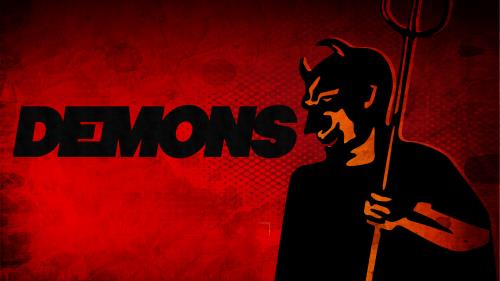-
The Stronger Man Series
Contributed by Tom Fuller on Nov 28, 2017 (message contributor)
Summary: As humans we have been taken prisoner by a strong opponent who wants nothing but to destroy us. We see this captivity and torture revealed graphically as Jesus takes on not one but thousands of demons at once. It is a powerful picture of how our ultimate
Just prior to Chapter 5 Jesus calmed the wind and seas and the disciples said “Who then is this?” As the disciples approach land they find out in spades. In a way, all of chapter 5 involves people imprisoned and the ultimate action hero who comes to set them free. In verses 1 through 20 we have the incredible story of the man possessed by thousands of demons who was set free to share the gospel. In verses 25 through 34 we have the story of women imprisoned with a twelve year infirmity that is instantly healed. And in verses 21 and following we have the story of Jairus, whose daughter was held by the ultimate prison: death, whom Jesus raises.
It is the ultimate mission of our ultimate action hero to spring us all from the biggest prison of all: the prison of sin that keeps us away from God.
1
The area of the Gerasenes is on the south eastern side of the Sea of Galilee. It was part of the Decapolis, ten cities that were fairly independent of Rome and decidedly Gentile. The Scripture does not give us the reason why they landed there. We really don’t know if it was Jesus’ plan or if the boat was blown this direction by the storm of the previous night. But it doesn’t really matter.
2 Timothy 4:2 Proclaim the message; persist in it whether convenient or not
Wherever you find yourself that is your next assignment. This particular assignment was tragic and tough but well worth it!
2 – 5
Matthew tells us there were two men. It’s possible that only one did the talking, or that Mark (and Luke) focus on the worst of the two. This account should be absolutely astounding and revealing about the true nature of the master of this age and his tools: Satan and his demons. The world paints this picture of happiness through abandon and an “if it feels good, do it” mentality. The reality behind that mask is that Satan only wants to “steal, kill, and destroy” you.
But notice the life this man (or these men) lived: they spent their time in a graveyard, even as Satan is the symbol of death; he could not be restrained even as you cannot reason with or restrain evil, only destroy it; no one was strong enough to subdue him, even as we are not capable of battling this enemy of sin and death on our own; and finally we see him crying and cutting himself with stones. What complete misery this man must have been in. He would cry out, either out of pain or involuntarily and cut himself either as that is the nature of the demons: to destroy, or perhaps in some attempt to bleed them out. This man was unclean in three ways: he was a Gentile, he lived in a tomb, and he was demon possessed.
Powerful, unrestrainable and unreasonable power bent on evil and destruction. Into this man’s life comes an even more powerful Hero to rescue him.
6 – 8
Notice that as powerful as the demons are, they cannot help but kneel before Jesus, their creator. It’s possible that in the struggle for control the man himself came running but it was the demon who spoke. It’s possible too that the demon came to the shore to try and frighten Jesus away. Jesus told the demon to leave, and in response the demon says “what do we have in common?” (literally: “what to you and me?”). Satan and his demons have nothing in common with Jesus because in their rebellion they left all hope of ever being redeemed.
The demon uses Jesus’ full name, and the highest name for the Lord recorded in Mark’s gospel. “Most high God” was used in the Old Testament to signal God’s power over all idols. It was believed that by using someone’s full name you could control them. He was also trying to embarrass Jesus by calling Him the Son of God when it wasn’t time for Him to reveal that fully. Why had the demon not come out? Jesus was here dealing with multiplied demons who plead with Jesus not to “torture” or “torment” them. In Revelation 20 God will throw all of the demons in the Lake of Fire where they will indeed be tormented for all of eternity. They know their fate; they are merely trying to do as much damage as possible until they are arrested, and the sentence is carried out.
Jesus then turns the tables on this demon by asking its name:
9 – 10
It was believed that gods were regional and thus the plea not to send them out of the region. There is some evidence to that effect. Daniel 10:13 describes angels and demons as “princes” (Hebrew sarim: nobles). There, the “prince of the kingdom of Persia” is said to have hindered an angel from coming to Daniel until Michael one of the “chief princes” came to his rescue. So it is possible that demons claim some sort of geographical turf. Now the demon turns from defiance to pleading to negotiation.

 Sermon Central
Sermon Central



